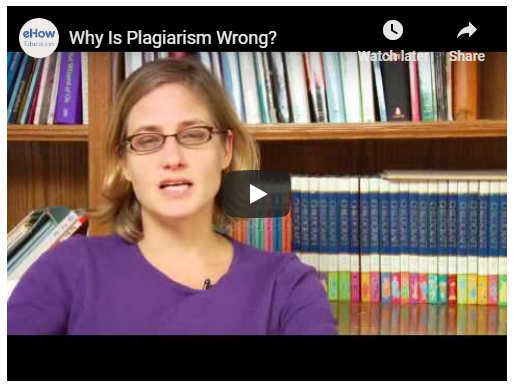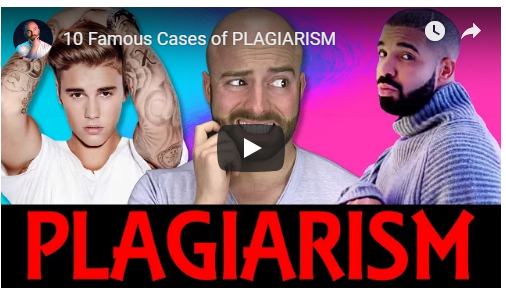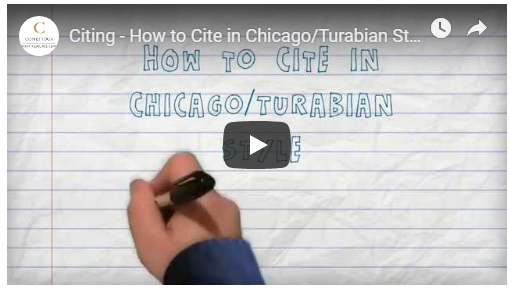4.6: Writing Ethically
- Page ID
- 4118
\( \newcommand{\vecs}[1]{\overset { \scriptstyle \rightharpoonup} {\mathbf{#1}} } \)
\( \newcommand{\vecd}[1]{\overset{-\!-\!\rightharpoonup}{\vphantom{a}\smash {#1}}} \)
\( \newcommand{\dsum}{\displaystyle\sum\limits} \)
\( \newcommand{\dint}{\displaystyle\int\limits} \)
\( \newcommand{\dlim}{\displaystyle\lim\limits} \)
\( \newcommand{\id}{\mathrm{id}}\) \( \newcommand{\Span}{\mathrm{span}}\)
( \newcommand{\kernel}{\mathrm{null}\,}\) \( \newcommand{\range}{\mathrm{range}\,}\)
\( \newcommand{\RealPart}{\mathrm{Re}}\) \( \newcommand{\ImaginaryPart}{\mathrm{Im}}\)
\( \newcommand{\Argument}{\mathrm{Arg}}\) \( \newcommand{\norm}[1]{\| #1 \|}\)
\( \newcommand{\inner}[2]{\langle #1, #2 \rangle}\)
\( \newcommand{\Span}{\mathrm{span}}\)
\( \newcommand{\id}{\mathrm{id}}\)
\( \newcommand{\Span}{\mathrm{span}}\)
\( \newcommand{\kernel}{\mathrm{null}\,}\)
\( \newcommand{\range}{\mathrm{range}\,}\)
\( \newcommand{\RealPart}{\mathrm{Re}}\)
\( \newcommand{\ImaginaryPart}{\mathrm{Im}}\)
\( \newcommand{\Argument}{\mathrm{Arg}}\)
\( \newcommand{\norm}[1]{\| #1 \|}\)
\( \newcommand{\inner}[2]{\langle #1, #2 \rangle}\)
\( \newcommand{\Span}{\mathrm{span}}\) \( \newcommand{\AA}{\unicode[.8,0]{x212B}}\)
\( \newcommand{\vectorA}[1]{\vec{#1}} % arrow\)
\( \newcommand{\vectorAt}[1]{\vec{\text{#1}}} % arrow\)
\( \newcommand{\vectorB}[1]{\overset { \scriptstyle \rightharpoonup} {\mathbf{#1}} } \)
\( \newcommand{\vectorC}[1]{\textbf{#1}} \)
\( \newcommand{\vectorD}[1]{\overrightarrow{#1}} \)
\( \newcommand{\vectorDt}[1]{\overrightarrow{\text{#1}}} \)
\( \newcommand{\vectE}[1]{\overset{-\!-\!\rightharpoonup}{\vphantom{a}\smash{\mathbf {#1}}}} \)
\( \newcommand{\vecs}[1]{\overset { \scriptstyle \rightharpoonup} {\mathbf{#1}} } \)
\( \newcommand{\vecd}[1]{\overset{-\!-\!\rightharpoonup}{\vphantom{a}\smash {#1}}} \)
\(\newcommand{\avec}{\mathbf a}\) \(\newcommand{\bvec}{\mathbf b}\) \(\newcommand{\cvec}{\mathbf c}\) \(\newcommand{\dvec}{\mathbf d}\) \(\newcommand{\dtil}{\widetilde{\mathbf d}}\) \(\newcommand{\evec}{\mathbf e}\) \(\newcommand{\fvec}{\mathbf f}\) \(\newcommand{\nvec}{\mathbf n}\) \(\newcommand{\pvec}{\mathbf p}\) \(\newcommand{\qvec}{\mathbf q}\) \(\newcommand{\svec}{\mathbf s}\) \(\newcommand{\tvec}{\mathbf t}\) \(\newcommand{\uvec}{\mathbf u}\) \(\newcommand{\vvec}{\mathbf v}\) \(\newcommand{\wvec}{\mathbf w}\) \(\newcommand{\xvec}{\mathbf x}\) \(\newcommand{\yvec}{\mathbf y}\) \(\newcommand{\zvec}{\mathbf z}\) \(\newcommand{\rvec}{\mathbf r}\) \(\newcommand{\mvec}{\mathbf m}\) \(\newcommand{\zerovec}{\mathbf 0}\) \(\newcommand{\onevec}{\mathbf 1}\) \(\newcommand{\real}{\mathbb R}\) \(\newcommand{\twovec}[2]{\left[\begin{array}{r}#1 \\ #2 \end{array}\right]}\) \(\newcommand{\ctwovec}[2]{\left[\begin{array}{c}#1 \\ #2 \end{array}\right]}\) \(\newcommand{\threevec}[3]{\left[\begin{array}{r}#1 \\ #2 \\ #3 \end{array}\right]}\) \(\newcommand{\cthreevec}[3]{\left[\begin{array}{c}#1 \\ #2 \\ #3 \end{array}\right]}\) \(\newcommand{\fourvec}[4]{\left[\begin{array}{r}#1 \\ #2 \\ #3 \\ #4 \end{array}\right]}\) \(\newcommand{\cfourvec}[4]{\left[\begin{array}{c}#1 \\ #2 \\ #3 \\ #4 \end{array}\right]}\) \(\newcommand{\fivevec}[5]{\left[\begin{array}{r}#1 \\ #2 \\ #3 \\ #4 \\ #5 \\ \end{array}\right]}\) \(\newcommand{\cfivevec}[5]{\left[\begin{array}{c}#1 \\ #2 \\ #3 \\ #4 \\ #5 \\ \end{array}\right]}\) \(\newcommand{\mattwo}[4]{\left[\begin{array}{rr}#1 \amp #2 \\ #3 \amp #4 \\ \end{array}\right]}\) \(\newcommand{\laspan}[1]{\text{Span}\{#1\}}\) \(\newcommand{\bcal}{\cal B}\) \(\newcommand{\ccal}{\cal C}\) \(\newcommand{\scal}{\cal S}\) \(\newcommand{\wcal}{\cal W}\) \(\newcommand{\ecal}{\cal E}\) \(\newcommand{\coords}[2]{\left\{#1\right\}_{#2}}\) \(\newcommand{\gray}[1]{\color{gray}{#1}}\) \(\newcommand{\lgray}[1]{\color{lightgray}{#1}}\) \(\newcommand{\rank}{\operatorname{rank}}\) \(\newcommand{\row}{\text{Row}}\) \(\newcommand{\col}{\text{Col}}\) \(\renewcommand{\row}{\text{Row}}\) \(\newcommand{\nul}{\text{Nul}}\) \(\newcommand{\var}{\text{Var}}\) \(\newcommand{\corr}{\text{corr}}\) \(\newcommand{\len}[1]{\left|#1\right|}\) \(\newcommand{\bbar}{\overline{\bvec}}\) \(\newcommand{\bhat}{\widehat{\bvec}}\) \(\newcommand{\bperp}{\bvec^\perp}\) \(\newcommand{\xhat}{\widehat{\xvec}}\) \(\newcommand{\vhat}{\widehat{\vvec}}\) \(\newcommand{\uhat}{\widehat{\uvec}}\) \(\newcommand{\what}{\widehat{\wvec}}\) \(\newcommand{\Sighat}{\widehat{\Sigma}}\) \(\newcommand{\lt}{<}\) \(\newcommand{\gt}{>}\) \(\newcommand{\amp}{&}\) \(\definecolor{fillinmathshade}{gray}{0.9}\)What you’ll learn to do: Discuss issues of plagiarism, copyright and fair use
Developing a business report or other communication comes with certain responsibilities, namely proper citation of other people’s work. There are three common concepts that we will review here; all three have to do with the right author or creator getting credit for his or her efforts:
- Plagiarism
- Copyright
- Fair Use
Plagiarism is using someone’s ideas or materials without properly citing their authority. The following eHow Education video discusses the problem:

Copyright is a concept originating in 17th Century England. Concerned about the unregulated copying of books, the English Parliament passed a law detailing how a copy of a published text needed to be deposited with the government, ostensibly to track and gauge authorship, and then provide due credit. This practice has evolved since obviously, but the same concept applies — that of the governing authority in a given region being charged with regulating authorship and creation of content.
Lastly, Fair Use is a related concept that details how one may use copyrighted or other protected material without citation. There are four conditions, and all four must be met:[1]
- the purpose and character of the use, including whether such use is of a commercial nature or is for nonprofit educational purposes
- the nature of the copyrighted work
- the amount and substantiality of the portion used in relation to the copyrighted work as a whole
- the effect of the use upon the potential market for or value of the copyrighted work
In the following pages, we will go into each in greater detail.
Learning Outcomess
- Discuss the importance of professional integrity in written communication/reports
- Identify guidelines to avoid plagiarism, copyright, or violation of Fair Use Act
- Document and cite sources using the correct style and formatting
Professional Integrity
Consider the earlier discussion on the CRAAP Test for evaluating sources:
- Currency
- Relevance
- Authority
- Accuracy
- Purpose
The test and its authors argue that for a source to be useful, it must meet criteria laid out in the above categories. The same concept applies to material you author, and the materials you submit to others in your organization.
For decision-makers or colleagues to trust the reports you write, your professional integrity, and the manner or how you go about doing your work, must be above any concern.
Consider the following ethical violations in recent memory; all of which highlight the role of the individual’s behavior:[2]The 10 Biggest Business Scandals of 2017
- Facebook’s use of your personal data, and the role of Cambridge Analytica in the 2016 US Presidential election
- Wells Fargo’s fake accounts, and over-charging of customers
- Apple’s deliberately slowed down iPhones
- Melania Trump’s speechwriter’s use of Michelle Obama’s speech
In viewing the above instances, and thinking on your own role in the development of reports and other information, we can consider the concept of professional integrity to orient our thinking and action. In each of the above cases, individuals, or groups of individuals, knowingly violated reasonable ethical standards and norms. These standards are either codified in law, as is the case around copyright and use of someone’s personal data, or what we could consider a common sense standard.
A common sense standard is one about which we could quickly ask ourselves: “Would anyone question the manner in which I’m doing this work or activity?” If the answer is yes, your behavior needs to adjust. In the above cases, it is clear that this did not happen.
The University of St. Andrews describes Professional Integrity, and details the following concepts as central to the idea:[3]
- The researcher (or business report writer), operates at the highest levels of ethical responsibility. We should take this to mean that you will do everything you can to build reports, and use information in ways that no one would ever question your conduct. Proper citation and use of others’ work, care to anonymize sources—especially anyone vulnerable, and safeguarding of data to ensure it is not tampered with, are all germane.
- Operate and conduct yourself within your skillset. This is an interesting concept that can be difficult to think through and maintain in one’s action in a busy and competitive organization. St. Andrews’ here is describing a sort of intellectual honesty around what you might be qualified or unqualified to do. Bottom line: if someone asks you to do something for which you are not qualified, consider ways to turn down the project, rescope the project, or get help with the areas or pieces that are outside your skillset.
Practice Question
For decision-makers or colleagues to trust the reports you write, ________ must be above any concern.
- the ideology behind your approach
- how you go about doing your work
- your ability to do primary source work
- Answer
-
how you go about doing your work
Avoiding Plagiarism
As discussed in the previous page, incidents of plagiarism and related ethical violations are unfortunately common features of contemporary life, both in and out of our work environments. The video below from 2016 describes 10 famous cases:

Practice Question
As Karen is scrolling through her News Feed on Facebook, she sees a paragraph posted by a yoga gym’s Facebook group that she finds inspirational. She copies the text and posts it as her Facebook status. Was this plagiarism?
- No, she didn't reuse enough material for this to count as plagarism.
- No, she simply wanted to pass on the inspiration!
- Yes, absolutely
- Answer
-
Yes, absolutely
Both intentional and unintentional plagiarism are problems, and you should do everything you can to keep them from happening. It is obvious that intentional plagiarism would be a gross violation; however, unintentional plagiarism is a bit more difficult to nail down.
As the UNSW Sydney’s page for their current students describes, “most incidents of plagiarism are the product not of deliberate cheating, but of underdeveloped academic skills.”[4] Often the problem isn’t with the ethical standing of the author but with something else, such as lack of time, lack of clear notes, and lack of understanding of proper referencing. Thus, the basic rule of thumb for avoiding plagiarism is three-fold:
- If you even suspect the idea is someone else’s, take the time to go back through notes, Google, or other reputable sources, and search for the author.
- Allow enough time to build your reports.
- If you are not sure of authorship, consider using other evidence or sources to articulate your idea.
There are, however, a very few things that don’t require attributions: scientific or mathematical equations and “common knowledge.” You don’t have to provide a citation if you include the equation E = mc2, but you do need to attribute a quote that explains the history of the equation’s discovery. You don’t have to provide a citation if you include the fact that gravity exists, but you do need to provide a citation for a study that discusses how gravity impacts astronauts on the ISS.
Practice Question
Rodger is writing a proposal recommending the reduce of plastic waste at his store. He asks his colleague, Aamir, to look over his report before its submission. Aamir pointed out that while Rodger uses a lot of compelling data about plastic waste around the world, none of it has cited sources. Was this plagiarism?
- No, he doesn't have to provide citations because this counts as general knowledge.
- No, he simply forgot to include the correct citations.
- Yes, absolutely
- Answer
-
Yes, absolutely
Documenting and Citing Sources
Proper citation of sources is essential to avoiding plagiarism or copyright violations. The following video from Conestoga College Library Resource Centre discusses the Turabian Chicago Style found in the Chicago Manual of Style. You can find more detail about the Chicago Manual of Style online or purchase a printed copy, now on its 17th edition.

There is however something pertinent to the business world that we should consider: there is a common tension between Academic/University environments, and the often-labeled, “Real World.” While academic writing clearly requires proper citation in accordance with generally agreed upon rules, business writing might not need to be so precise. The spirit of attribution however, and not taking credit for someone else’s work, is still obviously at play. Consider your audience, the time available, and the purpose of the communication when making a decision about style and formatting of citations.
Style and visual considerations are often important for business writing as well. Consider this McKinsey Global Institute report. On page 11 of the report, we can find one simple reference. So as not to visually distract the reader, the authors use a footnote. This is appropriate for a glossy high dollar report, for which McKinsey and other powerful consulting houses are well known. On page 12 of the report, an infographic with extensive quantifiable data, provides source material towards the bottom of the table in a very muted and small font. This is reasonable for the type of document at hand, and could provide you with insight into citation style for your reports.
The key here is proper attribution, and doing it in a manner that conforms with the visual and general use of your sources. The closer to academic or think-tank like work you are, the more precise and formal it needs to be; if, however, you worked for something like a startup or a smaller company, overly formal and precise citation could actually be distracting and cumbersome. Use your best judgement.
Practice Question
If you were a member of a startup or smaller organization, how would you go about citing sources?
- The more formal the better! That way no one can doubt your integrity.
- Nothing too formal; you should use your best judgment to ensure proper attribution without making the overall document feel cumbersome.
- If you work in an organization like this, it's not important to cite sources; just get the info out there to the boss.
- Answer
-
Nothing too formal; you should use your best judgment to ensure proper attribution without making the overall document feel cumbersome.
- Larson, Aaron. "Fair Use Doctrine and Copyright Law". ExpertLaw.com.11 February 2018 Web. 16 April 2018. ↵
- Shen, Lucinda. "The 10 Biggest Business Scandals of 2017," Fortune. 21 Dec 2017. Web. 18 June 2018. ↵
- University of St. Andrews. "Professional Integrity." Web. 18 June 2018. ↵
- UNSW Sydney. "How Does Plagiarism Happen?" Web. 18 June 2018. ↵

